Trevor
Forum Replies Created
Viewing 8 posts - 1 through 8 (of 8 total)
-
TrevorParticipantI think one of the most fun things I've found in bird watching so far is finding that one unique individual that just stands out. For example, I'm pretty sure that this HAS to be the wise old elder House Finch female. This is a picture of a picture, lol. Took the shot with my dslr and then shared with others (you guys) by snapping a picture with my phone of the picture review on the camera screen.
 in reply to: Activities: Exploring Birds #702312
in reply to: Activities: Exploring Birds #702312 -
TrevorParticipantA question as I progress through this section: Why is it that some birds can have size and color difference and still be considered the same species while others can have size and color differences but are considered separate species? For example, a song sparrow from Arizona is more lightly colored than one from British Colombia (or so I read in a Sibley book) but they are the same species whereas American Crows and fish Crows are nearly identical but are considered different species whereas eastern and western meadowlark have slightly different plumages but are consider different species. Or, another example, rock pigeons have dark and tan and white morphs but are all specifically rock pigeons. Are the species differentiated by actual DNA or genetical differences? For species who are so similar, using the song sparrow example again, are they genetically identical and simply have the slight color or feature size variations because of their local environment? As for species such as the rock pigeon where all of the variations can be seen in the same location, why are they so different assuming they are the same species?in reply to: Activities: Bird ID Practice #701488
-
TrevorParticipantI don't know that I could pick a favorite of my local birds. Originally I loved the Northern Paula as I thought the call it made, a very rapid succession of rising notes, while it threw its head back almost seeming to be laughing hysterically was the coolest thing. Then I discovered Carolina wrens in my back yard and loved how spunky they were. Then I discovered Roseate Spoonbills nearby. Them being commonly mistaken for flamingos brought a little bit of exotic thrill. Then I realized just how many Pelicans I see day after day and got a few really good photos of both American White Pelicans with fish in their bills and of Brown Pelicans which are our state bird. Then I discovered Anhingas. I've been calling them swamp bats because they're always perched just above the water, sometimes on a log and others in low hanging branches, with their wings spread wide open. I found out that they don't produce as much waterproofing oil as needed (or maybe it was they don't produce any waterproofing oils) to allow them to stay mostly dry while in the water and need to sun dry their wings for easier flight. Then I discovered just how many different sounds a Bluejay can make. Mine whistle while bobbing their whole body up and down (which makes it look like them look like they are the HAPPIEST birds ever nearly jumping for joy) and chatter like monkeys and make tiny chirps almost like whispering to each other and sound their loud, raucous calls just to try to describe a few of their sounds. Then there's Prothonotary Warblers, Baltimore Orioles, Pileated Woodpeckers, Starlings, and Crows. I've decided Crows must love crunchy Cheetohs because there's been so many times that I've seen a flock of them fussing over Cheetohs. I think one day I am going to go buy a small bag of Cheetohs, dump them out, and just watch the Crows go for them. I still haven't mentioned red winged black birds or wood ducks or muscovy ducks or black bellied whistling ducks or bald eagles or belted kingfishers or cormorants or gulls or doves or pigeons or owls.. the list just keeps going!


 in reply to: Activities: Exploring Birds #701308
in reply to: Activities: Exploring Birds #701308 -
TrevorParticipantAmanda, thank you! I didn't know the info you shared about the great blue heron and I'm sure I'm a shocked about it as you. Not to be sadistic but I kind of want to see one nab a squirrel only because I never would've thought it could or would. I think I have ospreys here as well (just north of New Orleans) but I've been told we have Harrier hawks too and I keep forgetting to go lookup the difference between them. Attached is a picture of one of them. I think I had decided it was an Osprey but I don't recall exactly.
 As for Boat-tailed Grackle, if I understand correctly, we have them here on the coast lines, but not as far inland as I am. I have a question about them though that perhaps you or someone could answer. They are very similar to Great-tailed Grackle. What distinguishes the two? The things I've read mostly say the difference is in the shape of their tails but the pictures I've seen don't help clarify. There's also the conundrum of identify those two versus the Common Grackle but, as I understand it, the Common Grackle is a bit smaller. in reply to: Activities: Exploring Birds #701292
As for Boat-tailed Grackle, if I understand correctly, we have them here on the coast lines, but not as far inland as I am. I have a question about them though that perhaps you or someone could answer. They are very similar to Great-tailed Grackle. What distinguishes the two? The things I've read mostly say the difference is in the shape of their tails but the pictures I've seen don't help clarify. There's also the conundrum of identify those two versus the Common Grackle but, as I understand it, the Common Grackle is a bit smaller. in reply to: Activities: Exploring Birds #701292 -
TrevorParticipantI can relate! Last year I was given the opportunity to follow a pair of Cardinals as they raised their two young and this year I had a parent Carolina wren with (her?) 3 fledglings following her around begging for food. I also found a Brown Thrasher nest in my Azalea hedge that had 3 eggs in it, 2 of which hatched. I saw the baby birds only a couple of times while they were in the nest but never once they left. I see brown thrashers more often now though! Lol It's fun to watch mama bird fly all over the yard getting food with 3 young right behind her or, watching a nest, the little heads pop up at any sound thinking it's a parent bringing food. FOOD, FOOD, GIMMEE FOOD, IT'S BEEN TWO MINUTES AND I'M STARVING!in reply to: Activities: Exploring Birds #699263
-
TrevorParticipantLisa, A thought for your nuthatches, if you're using a camera that allows you to switch to manual mode, you might try setting it to manual focus and either full manual exposure or aperature and shutter priority. With manual focus, point camera somewhere where you know they will go to, at a particular spot near a feeder for example, and focus the camera on that spot. With the camera in aperature and shutter priority mode, set shutter to something fast like 1/2000 sec and aperature to 5.6 or 6.3 maybe. You can let the camera decide what ISO to use though if you normally run your pictures through a post processing software then you could easily get away with setting the camera to underexpose by -0.3 possibly as far as -1 so that it'll select a lower ISO. That'll result in a darker picture with less noise that you can brighten up in Lightroom or whatever software you use. Or, set camera to full manual mode with the same shutter and aperature as above but select the ISO yourself. Being unsure of what kind of camera you're using, I think you may be able to accomplish this on any dslr, slr, or film camera. Phone camera apps now nowadays have an option to switch to a manual or pro mode that gives you many of these controls too. Hope this helps! I don't know that this is the best way to get you good pictures as I'm still learning a I go but this is currently how I approach getting pictures of elusive animals - set shutter, set aperature, adjust ISO for correct(or better) exposure, then maybe tweak shutter again.in reply to: Activities: Exploring Birds #699261
-
TrevorParticipant


 I have been learning on my own since about December 2018 when I purchased a dslr camera wanting to get into wildlife and landscape photography. I bought a larger telephoto lens to try to photograph the January 2019 super blood wolf moon and thought it would be good for wildlife because you can't always get close to wildlife for pictures. I took that lens out to the spillway near me(the whole area is swampland) and my very first pictures were of an American Kestrel. Turns out Kestrels are camera shy. I took the best pictures I could then realized "woah, that bird that I thought was just a pigeon or some other common drab bird is actually blue and orange and tiger striped and really cool looking!". From there, I began realizing just how diverse wildlife right here around me really is - birds and insects and plants and mammals and everything. The self paced discovery has been a huge motivation to keep exploring and learning. This course, thus far, has been a review of what I have learned of birds over the past year and a half roughly. I wish, however, that I had found it sooner as the content is rich, collected, and well explained tailored for someone who's just starting to delve into the mysteries of the world around us. Cornell lab's Merlin app is hugely useful for identifying birds as is Audubon's field guide app. eBird app is also useful and contributes to a research database though you should get a little experience with identifying birds before you start as identifications can be tricky (as I'm learning) and incorrect identifications might skew the research data. For those interested in more than just birds, I highly recommend iNaturalist app and website. It is also contributing to a research database but only submits entries as research grade after someone else in the community identifies or agrees with your identification of the species you post about. It and it's community is exception at helping you discover the id of what you are looking at whether bird or bug or mammal or plant or tree or fungus or whatever and does so remarkably with photos from camera or phone alike often times getting you feedback with a day or two and occasionally within hours. in reply to: Activities: Exploring Birds #698968
I have been learning on my own since about December 2018 when I purchased a dslr camera wanting to get into wildlife and landscape photography. I bought a larger telephoto lens to try to photograph the January 2019 super blood wolf moon and thought it would be good for wildlife because you can't always get close to wildlife for pictures. I took that lens out to the spillway near me(the whole area is swampland) and my very first pictures were of an American Kestrel. Turns out Kestrels are camera shy. I took the best pictures I could then realized "woah, that bird that I thought was just a pigeon or some other common drab bird is actually blue and orange and tiger striped and really cool looking!". From there, I began realizing just how diverse wildlife right here around me really is - birds and insects and plants and mammals and everything. The self paced discovery has been a huge motivation to keep exploring and learning. This course, thus far, has been a review of what I have learned of birds over the past year and a half roughly. I wish, however, that I had found it sooner as the content is rich, collected, and well explained tailored for someone who's just starting to delve into the mysteries of the world around us. Cornell lab's Merlin app is hugely useful for identifying birds as is Audubon's field guide app. eBird app is also useful and contributes to a research database though you should get a little experience with identifying birds before you start as identifications can be tricky (as I'm learning) and incorrect identifications might skew the research data. For those interested in more than just birds, I highly recommend iNaturalist app and website. It is also contributing to a research database but only submits entries as research grade after someone else in the community identifies or agrees with your identification of the species you post about. It and it's community is exception at helping you discover the id of what you are looking at whether bird or bug or mammal or plant or tree or fungus or whatever and does so remarkably with photos from camera or phone alike often times getting you feedback with a day or two and occasionally within hours. in reply to: Activities: Exploring Birds #698968 -
TrevorParticipant


 I have been learning on my own since about December 2018 when I purchased a dslr camera wanting to get into wildlife and landscape photography. I bought a larger telephoto lens to try to photograph the January 2019 super blood wolf moon and thought it would be good for wildlife because you can't always get close to wildlife for pictures. I took that lens out to the spillway near me(the whole area is swampland) and my very first pictures were of an American Kestrel. Turns out Kestrels are camera shy. I took the best pictures I could then realized "woah, that bird that I thought was just a pigeon or some other common drab bird is actually blue and orange and tiger striped and really cool looking!". From there, I began realizing just how diverse wildlife right here around me really is - birds and insects and plants and mammals and everything. The self paced discovery has been a huge motivation to keep exploring and learning. This course, thus far, has been a review of what I have learned of birds over the past year and a half roughly. I wish, however, that I had found it sooner as the content is rich, collected, and well explained tailored for someone who's just starting to delve into the mysteries of the world around us. Cornell lab's Merlin app is hugely useful for identifying birds as is Audubon's field guide app. eBird app is also useful and contributes to a research database though you should get a little experience with identifying birds before you start as identifications can be tricky (as I'm learning) and incorrect identifications might skew the research data. For those interested in more than just birds, I highly recommend iNaturalist app and website. It is also contributing to a research database but only submits entries as research grade after someone else in the community identifies or agrees with your identification of the species you post about. It and it's community is exception at helping you discover the id of what you are looking at whether bird or bug or mammal or plant or tree or fungus or whatever and does so remarkably with photos from camera or phone alike often times getting you feedback with a day or two and occasionally within hours. in reply to: Activities: Exploring Birds #698967
I have been learning on my own since about December 2018 when I purchased a dslr camera wanting to get into wildlife and landscape photography. I bought a larger telephoto lens to try to photograph the January 2019 super blood wolf moon and thought it would be good for wildlife because you can't always get close to wildlife for pictures. I took that lens out to the spillway near me(the whole area is swampland) and my very first pictures were of an American Kestrel. Turns out Kestrels are camera shy. I took the best pictures I could then realized "woah, that bird that I thought was just a pigeon or some other common drab bird is actually blue and orange and tiger striped and really cool looking!". From there, I began realizing just how diverse wildlife right here around me really is - birds and insects and plants and mammals and everything. The self paced discovery has been a huge motivation to keep exploring and learning. This course, thus far, has been a review of what I have learned of birds over the past year and a half roughly. I wish, however, that I had found it sooner as the content is rich, collected, and well explained tailored for someone who's just starting to delve into the mysteries of the world around us. Cornell lab's Merlin app is hugely useful for identifying birds as is Audubon's field guide app. eBird app is also useful and contributes to a research database though you should get a little experience with identifying birds before you start as identifications can be tricky (as I'm learning) and incorrect identifications might skew the research data. For those interested in more than just birds, I highly recommend iNaturalist app and website. It is also contributing to a research database but only submits entries as research grade after someone else in the community identifies or agrees with your identification of the species you post about. It and it's community is exception at helping you discover the id of what you are looking at whether bird or bug or mammal or plant or tree or fungus or whatever and does so remarkably with photos from camera or phone alike often times getting you feedback with a day or two and occasionally within hours. in reply to: Activities: Exploring Birds #698967
Viewing 8 posts - 1 through 8 (of 8 total)

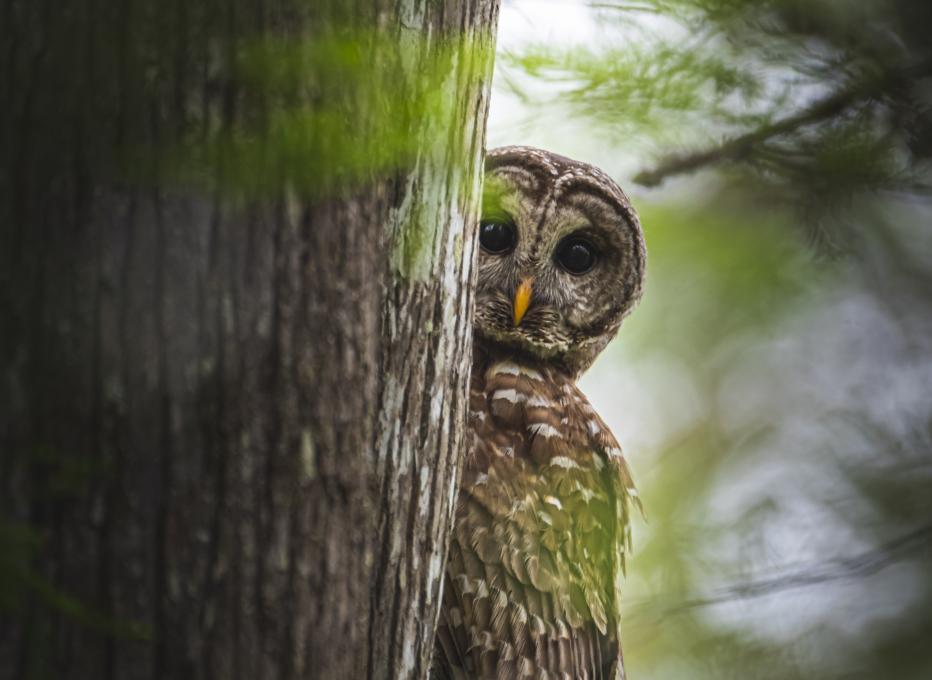
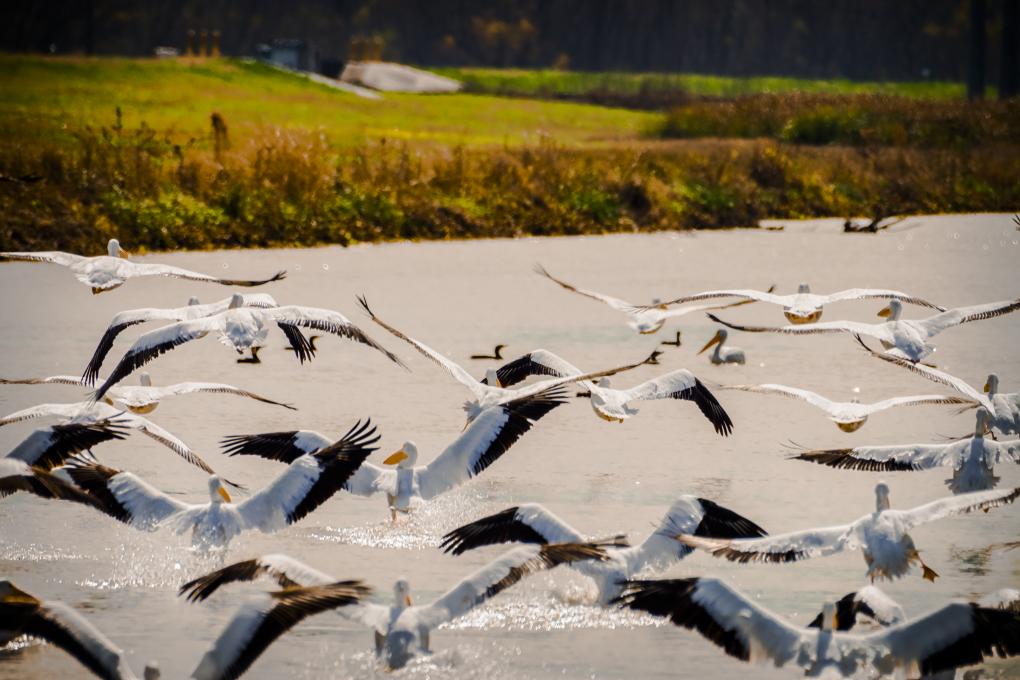

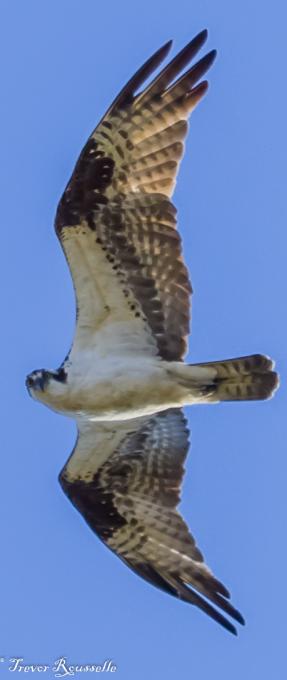 As for Boat-tailed Grackle, if I understand correctly, we have them here on the coast lines, but not as far inland as I am. I have a question about them though that perhaps you or someone could answer. They are very similar to Great-tailed Grackle. What distinguishes the two? The things I've read mostly say the difference is in the shape of their tails but the pictures I've seen don't help clarify. There's also the conundrum of identify those two versus the Common Grackle but, as I understand it, the Common Grackle is a bit smaller.
As for Boat-tailed Grackle, if I understand correctly, we have them here on the coast lines, but not as far inland as I am. I have a question about them though that perhaps you or someone could answer. They are very similar to Great-tailed Grackle. What distinguishes the two? The things I've read mostly say the difference is in the shape of their tails but the pictures I've seen don't help clarify. There's also the conundrum of identify those two versus the Common Grackle but, as I understand it, the Common Grackle is a bit smaller. 

 I have been learning on my own since about December 2018 when I purchased a dslr camera wanting to get into wildlife and landscape photography. I bought a larger telephoto lens to try to photograph the January 2019 super blood wolf moon and thought it would be good for wildlife because you can't always get close to wildlife for pictures. I took that lens out to the spillway near me(the whole area is swampland) and my very first pictures were of an American Kestrel. Turns out Kestrels are camera shy. I took the best pictures I could then realized "woah, that bird that I thought was just a pigeon or some other common drab bird is actually blue and orange and tiger striped and really cool looking!". From there, I began realizing just how diverse wildlife right here around me really is - birds and insects and plants and mammals and everything. The self paced discovery has been a huge motivation to keep exploring and learning. This course, thus far, has been a review of what I have learned of birds over the past year and a half roughly. I wish, however, that I had found it sooner as the content is rich, collected, and well explained tailored for someone who's just starting to delve into the mysteries of the world around us. Cornell lab's Merlin app is hugely useful for identifying birds as is Audubon's field guide app. eBird app is also useful and contributes to a research database though you should get a little experience with identifying birds before you start as identifications can be tricky (as I'm learning) and incorrect identifications might skew the research data. For those interested in more than just birds, I highly recommend iNaturalist app and website. It is also contributing to a research database but only submits entries as research grade after someone else in the community identifies or agrees with your identification of the species you post about. It and it's community is exception at helping you discover the id of what you are looking at whether bird or bug or mammal or plant or tree or fungus or whatever and does so remarkably with photos from camera or phone alike often times getting you feedback with a day or two and occasionally within hours.
I have been learning on my own since about December 2018 when I purchased a dslr camera wanting to get into wildlife and landscape photography. I bought a larger telephoto lens to try to photograph the January 2019 super blood wolf moon and thought it would be good for wildlife because you can't always get close to wildlife for pictures. I took that lens out to the spillway near me(the whole area is swampland) and my very first pictures were of an American Kestrel. Turns out Kestrels are camera shy. I took the best pictures I could then realized "woah, that bird that I thought was just a pigeon or some other common drab bird is actually blue and orange and tiger striped and really cool looking!". From there, I began realizing just how diverse wildlife right here around me really is - birds and insects and plants and mammals and everything. The self paced discovery has been a huge motivation to keep exploring and learning. This course, thus far, has been a review of what I have learned of birds over the past year and a half roughly. I wish, however, that I had found it sooner as the content is rich, collected, and well explained tailored for someone who's just starting to delve into the mysteries of the world around us. Cornell lab's Merlin app is hugely useful for identifying birds as is Audubon's field guide app. eBird app is also useful and contributes to a research database though you should get a little experience with identifying birds before you start as identifications can be tricky (as I'm learning) and incorrect identifications might skew the research data. For those interested in more than just birds, I highly recommend iNaturalist app and website. It is also contributing to a research database but only submits entries as research grade after someone else in the community identifies or agrees with your identification of the species you post about. It and it's community is exception at helping you discover the id of what you are looking at whether bird or bug or mammal or plant or tree or fungus or whatever and does so remarkably with photos from camera or phone alike often times getting you feedback with a day or two and occasionally within hours. 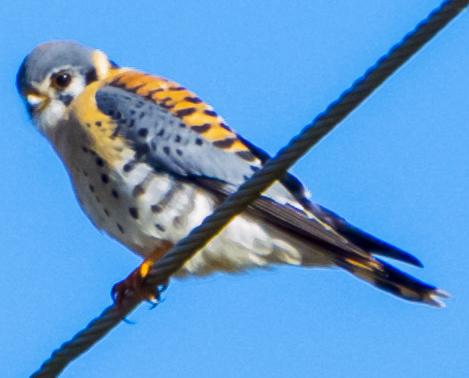
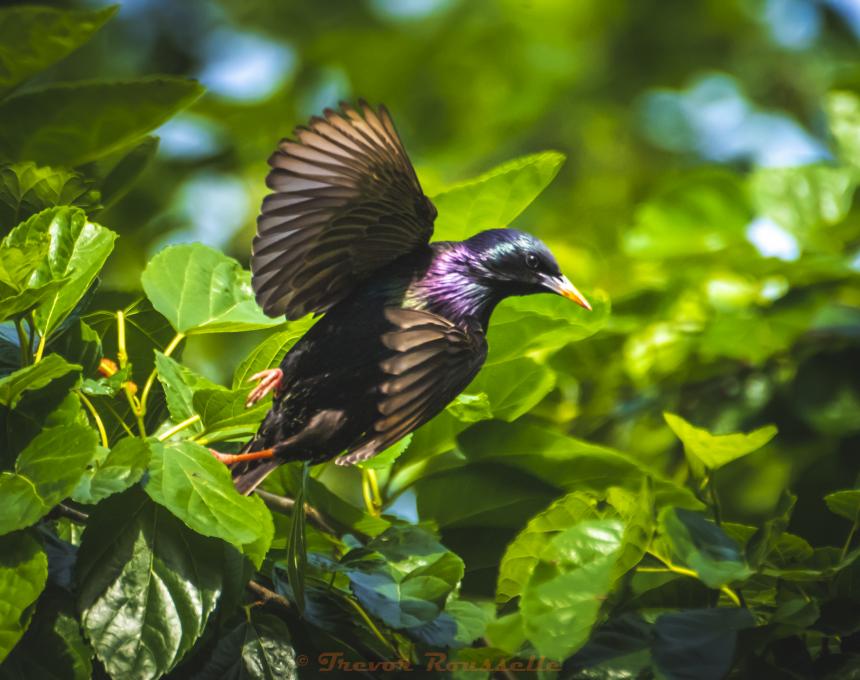
 I have been learning on my own since about December 2018 when I purchased a dslr camera wanting to get into wildlife and landscape photography. I bought a larger telephoto lens to try to photograph the January 2019 super blood wolf moon and thought it would be good for wildlife because you can't always get close to wildlife for pictures. I took that lens out to the spillway near me(the whole area is swampland) and my very first pictures were of an American Kestrel. Turns out Kestrels are camera shy. I took the best pictures I could then realized "woah, that bird that I thought was just a pigeon or some other common drab bird is actually blue and orange and tiger striped and really cool looking!". From there, I began realizing just how diverse wildlife right here around me really is - birds and insects and plants and mammals and everything. The self paced discovery has been a huge motivation to keep exploring and learning. This course, thus far, has been a review of what I have learned of birds over the past year and a half roughly. I wish, however, that I had found it sooner as the content is rich, collected, and well explained tailored for someone who's just starting to delve into the mysteries of the world around us. Cornell lab's Merlin app is hugely useful for identifying birds as is Audubon's field guide app. eBird app is also useful and contributes to a research database though you should get a little experience with identifying birds before you start as identifications can be tricky (as I'm learning) and incorrect identifications might skew the research data. For those interested in more than just birds, I highly recommend iNaturalist app and website. It is also contributing to a research database but only submits entries as research grade after someone else in the community identifies or agrees with your identification of the species you post about. It and it's community is exception at helping you discover the id of what you are looking at whether bird or bug or mammal or plant or tree or fungus or whatever and does so remarkably with photos from camera or phone alike often times getting you feedback with a day or two and occasionally within hours.
I have been learning on my own since about December 2018 when I purchased a dslr camera wanting to get into wildlife and landscape photography. I bought a larger telephoto lens to try to photograph the January 2019 super blood wolf moon and thought it would be good for wildlife because you can't always get close to wildlife for pictures. I took that lens out to the spillway near me(the whole area is swampland) and my very first pictures were of an American Kestrel. Turns out Kestrels are camera shy. I took the best pictures I could then realized "woah, that bird that I thought was just a pigeon or some other common drab bird is actually blue and orange and tiger striped and really cool looking!". From there, I began realizing just how diverse wildlife right here around me really is - birds and insects and plants and mammals and everything. The self paced discovery has been a huge motivation to keep exploring and learning. This course, thus far, has been a review of what I have learned of birds over the past year and a half roughly. I wish, however, that I had found it sooner as the content is rich, collected, and well explained tailored for someone who's just starting to delve into the mysteries of the world around us. Cornell lab's Merlin app is hugely useful for identifying birds as is Audubon's field guide app. eBird app is also useful and contributes to a research database though you should get a little experience with identifying birds before you start as identifications can be tricky (as I'm learning) and incorrect identifications might skew the research data. For those interested in more than just birds, I highly recommend iNaturalist app and website. It is also contributing to a research database but only submits entries as research grade after someone else in the community identifies or agrees with your identification of the species you post about. It and it's community is exception at helping you discover the id of what you are looking at whether bird or bug or mammal or plant or tree or fungus or whatever and does so remarkably with photos from camera or phone alike often times getting you feedback with a day or two and occasionally within hours.